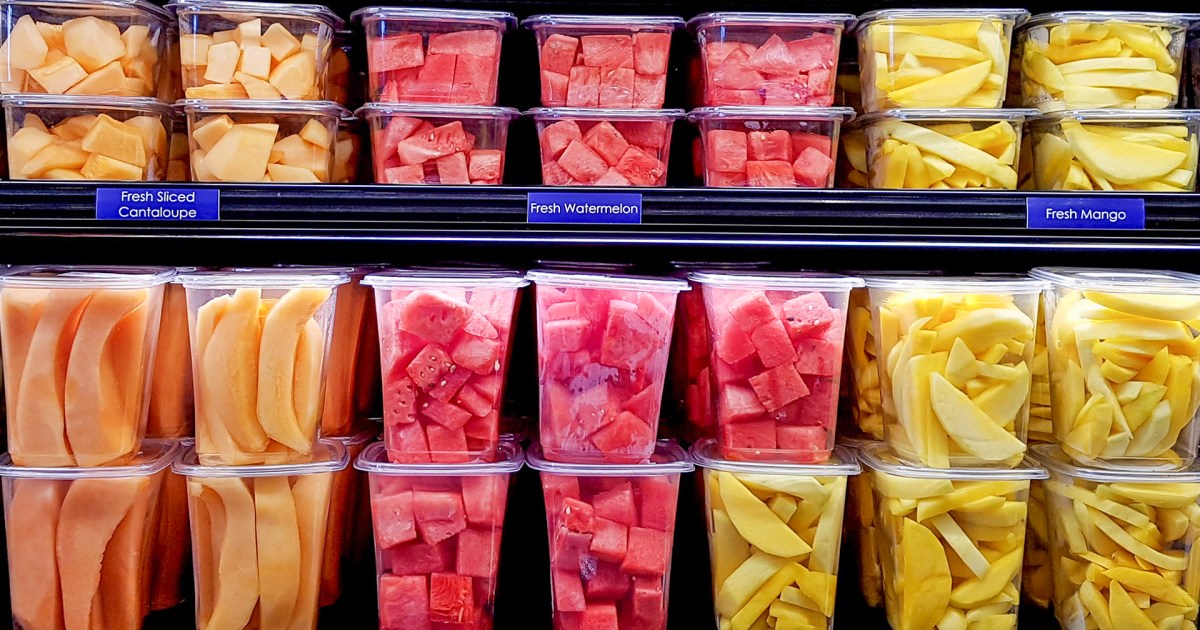Cutting watermelon, cantaloupe and papaya can pose a health risk, which has been confirmed by the scientific committee of the Spanish Agency for Food Safety and Nutrition.
And writer Marta Chavarrias says, in a report published by the Spanish newspaper "eldiario", that eating fresh and sweet fruits now with rising temperatures has become more desirable, especially if the fruit is cut and peeled, and ready to eat, without the need to peel it or even washed.
The writer stated that the presence of chopped fruit, which has become a "fashion" in recent years, not only filled the shelves of shops with colors and facilitated the consumption of this type of food, but also became a major challenge to food safety due to special handling and storage needs.
Where is the problem with slicing fruit?
Organisms
The fruits are grown in very special conditions that expose them to risks that other foods do not.
During cultivation, it comes into contact with the soil, an aspect that increases the risk of microorganisms appearing on its surface, and then if it is not treated and washed well;
As in cutting fruits such as watermelon, part of these microorganisms can enter the edible part.
These foods can be a means of transmitting disease-causing germs and parasites. The risk of disease outbreaks increases if appropriate conditions are not respected during cultivation, harvesting, storage and sale.
For example, mold should be given special care, by maintaining the appropriate temperature when preserving foods.
Increased risk of oxidation
Cutting or peeling the fruit exposes its interior to light and air, which causes oxidation and affects texture, color and flavor.
In addition, you can start losing nutrients if a long time passes between cutting and consuming them, as water-soluble vitamins, such as vitamins C and B, are particularly sensitive to oxidation.
This does not mean that the cut fruit is not nutritious, but we can get the necessary content of water, fiber and vitamins if it is not long after the purchase.
expiry
When fruit is sliced, the sugars break down and release carbon dioxide, which causes faster spoilage and causes some changes in taste and texture.
Cut watermelon, cantaloupe and papaya in half
The author points out that in order to provide answers and solutions to some of these challenges;
The Scientific Committee of the Spanish Agency for Food Safety and Nutrition approved a report a few weeks ago that highlighted the storage conditions of halved fruits such as watermelon, cantaloupe and papaya, and the conclusions were that:
Cutting watermelon, cantaloupe, and papaya in half may pose health risks if not stored at an appropriate temperature.
Storage temperature is key to danger and prevention.
It is advisable to discard those fruits that have reached an overripe degree of maturity or have cracks on the surface;
It can be a source of pollution.
The writer also addresses the storage conditions of halved fruit in retail stores, as watermelon and papaya fruits cut in half can be kept at 25 ° C for less than 3 hours in a well-ventilated place protected from sunlight.
After this time it should be stored in the refrigerator at temperatures below 5 ° C.
According to experts, storing the cut fruit at room temperature for a short period of time does not seem to have a significant effect on the development of pathogens, if the cut fruit is cooled afterwards and consumed in a short period of time.
At home, it is advisable to put the fruit in the refrigerator as soon as possible and keep it at an appropriate temperature until it is consumed.
In conclusion, if the store where you buy the cut fruit follows safety procedures in terms of hygiene and storage temperature, then you can buy from it, otherwise it is better to buy the fruit and then wash and cut it at home.

